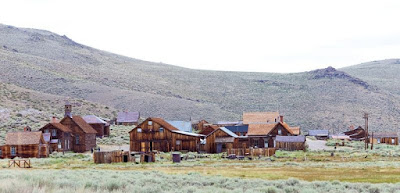One of America’s most beautiful abandoned town, now a protected State Historic Park, is Bodie, located east of the Sierra Nevada mountain range in Mono County, California.
Bodie was founded by W. S. Bodey, initially as a mining camp,
after he discovered gold near a place that is now called Bodie Bluff in 1859. Unfortunately, the poor man died in a snow storm that very winter and never saw the rise of the town that was named after him. Legend has it that a sign painter misspelled the name as “Bodie”, while other sources claim that the change in spelling was deliberate in order to ensure correct pronunciation.
Bodie’s growth was slow for the first seventeen years, and was home to only about twenty miners, until a significant vein of gold-rich ore was discovered. The new discovery transformed Bodie
from an isolated mining camp to a booming town of the wild west, and soon miners, their families, gamblers, businessmen, as well as robbers, gunslingers and prostitutes flocked to the area in search of fortune. By 1879, Bodie had a population of approximately 10,000 people and around 2,000 buildings with amenities like banks, fire companies, churches, a railroad, several daily newspapers, and breweries. At one time, there was reported to be 65 saloons in town that lined the town’s main street, which was a mile long.
Eventually, Bodie gained a reputation for violence and lawlessness. Murders, shootouts, barroom brawls, and stagecoach holdups were regular occurrences. Its brothels, gambling halls, and opium dens were popular among the townsfolk.
Bodie’s golden years didn’t last long. By 1882, it had already
started to decline as several smaller mining companies went bankrupt and people began to leave the town in search of better opportunities. At the same time new boomtowns in Montana, Arizona and Utah lured the workers away from Bodie. By 1910, less than 1,000 people lived here. Then a devastating fire in 1932 wiped out 90% of the town’s buildings, and people packed what they could into their wagon and truck and moved out. Despite the declining population and diminishing profits, some of the mines continued operating until the war forced them to close in 1942.
Today, Bodie is one of the most authentic and best preserved town in the West. Most of the buildings that survived the fire still stand,
and aside from the dust and decay, it looks much the same as it did over 50 years ago when the last residents left. In 1961, the town was designated a National Historic Landmark, and in 1962 it became Bodie State Historic Park.























































